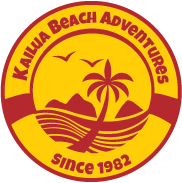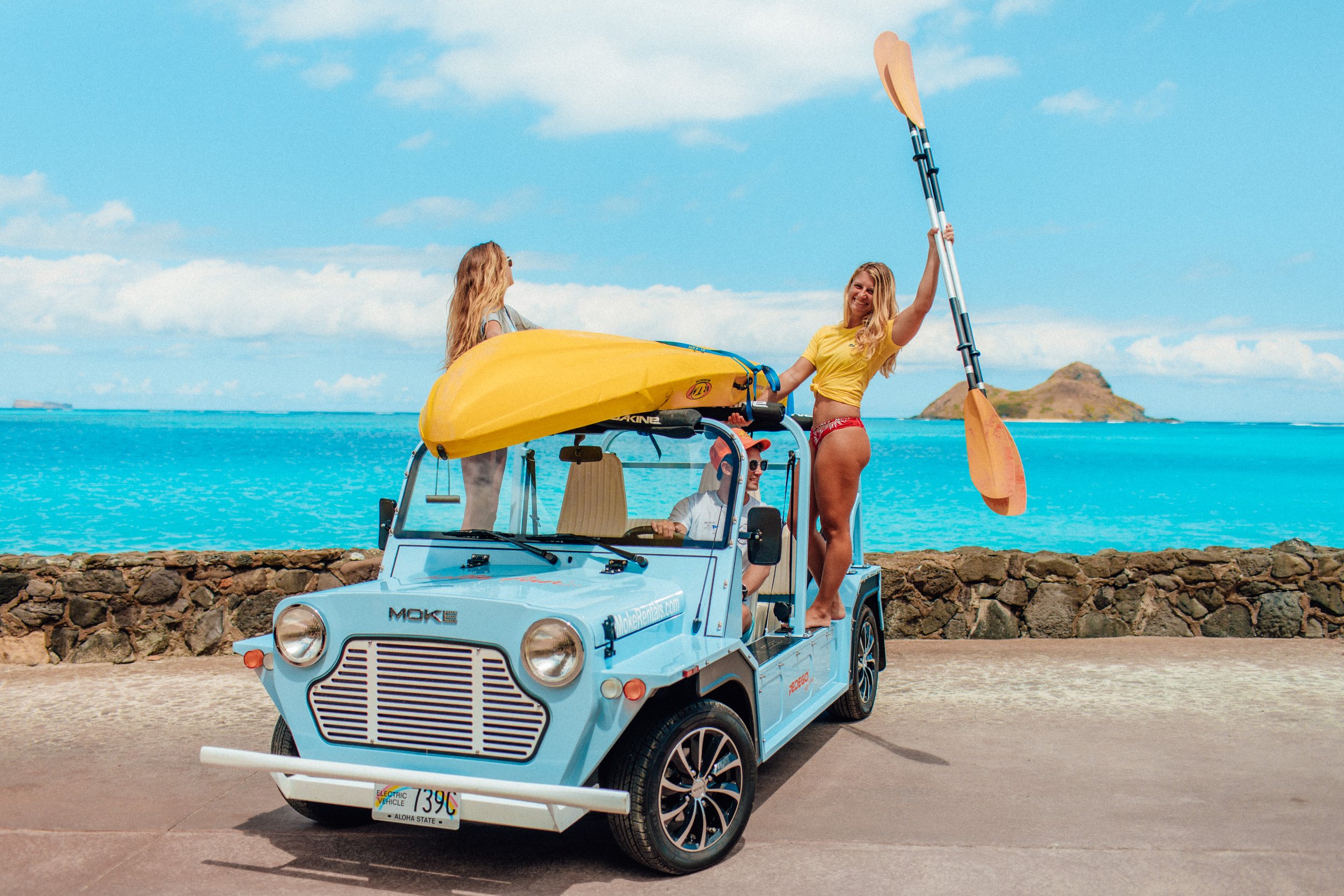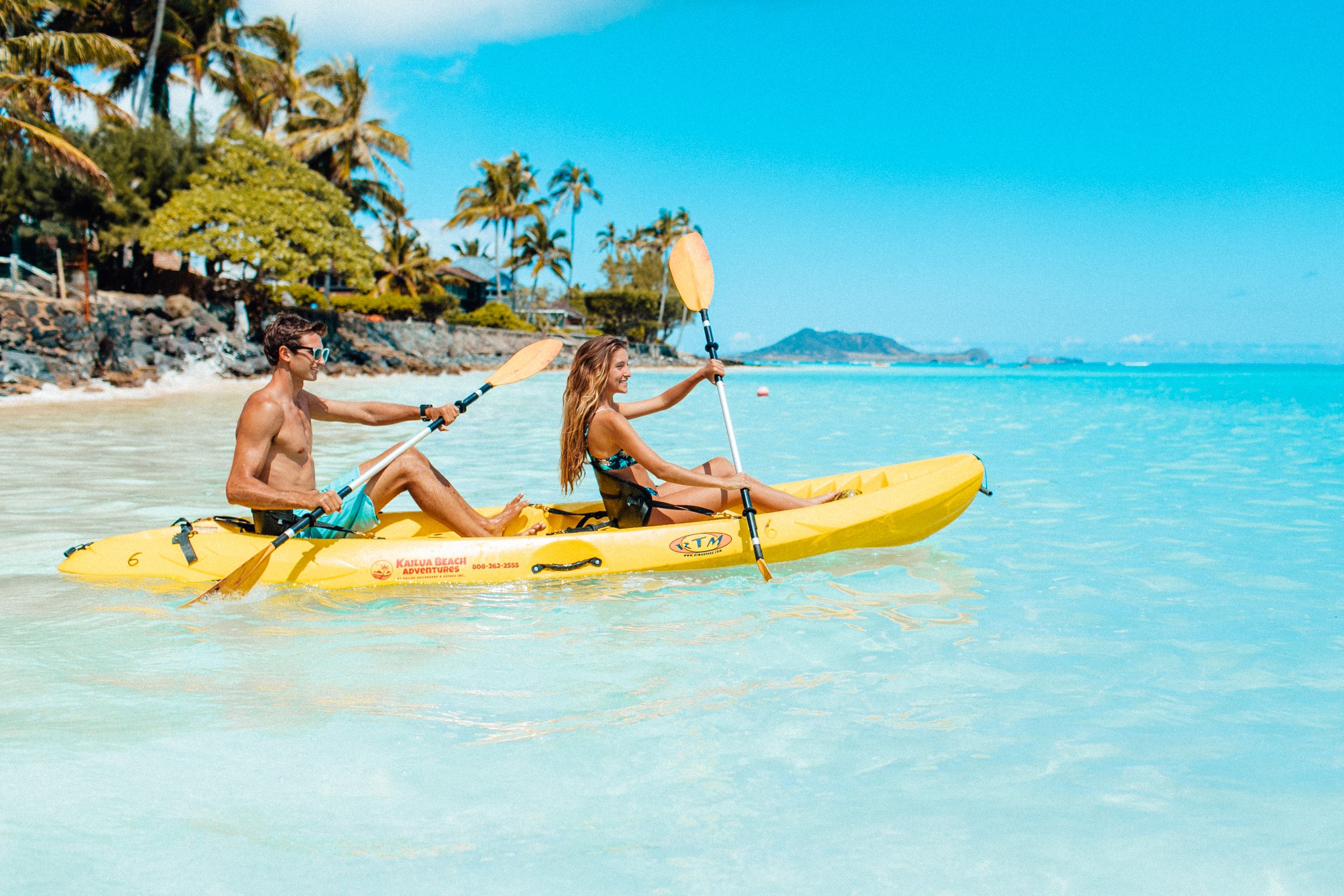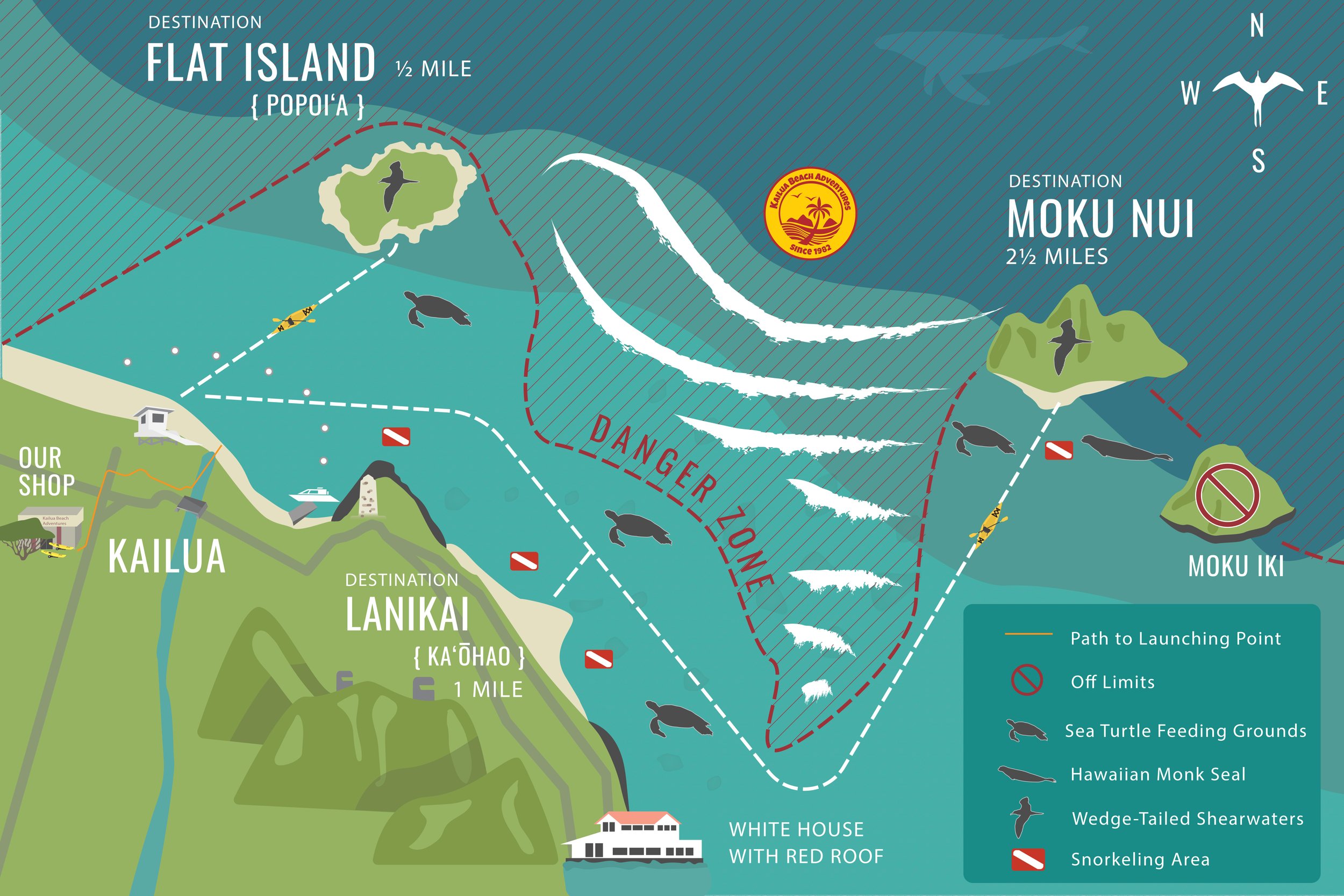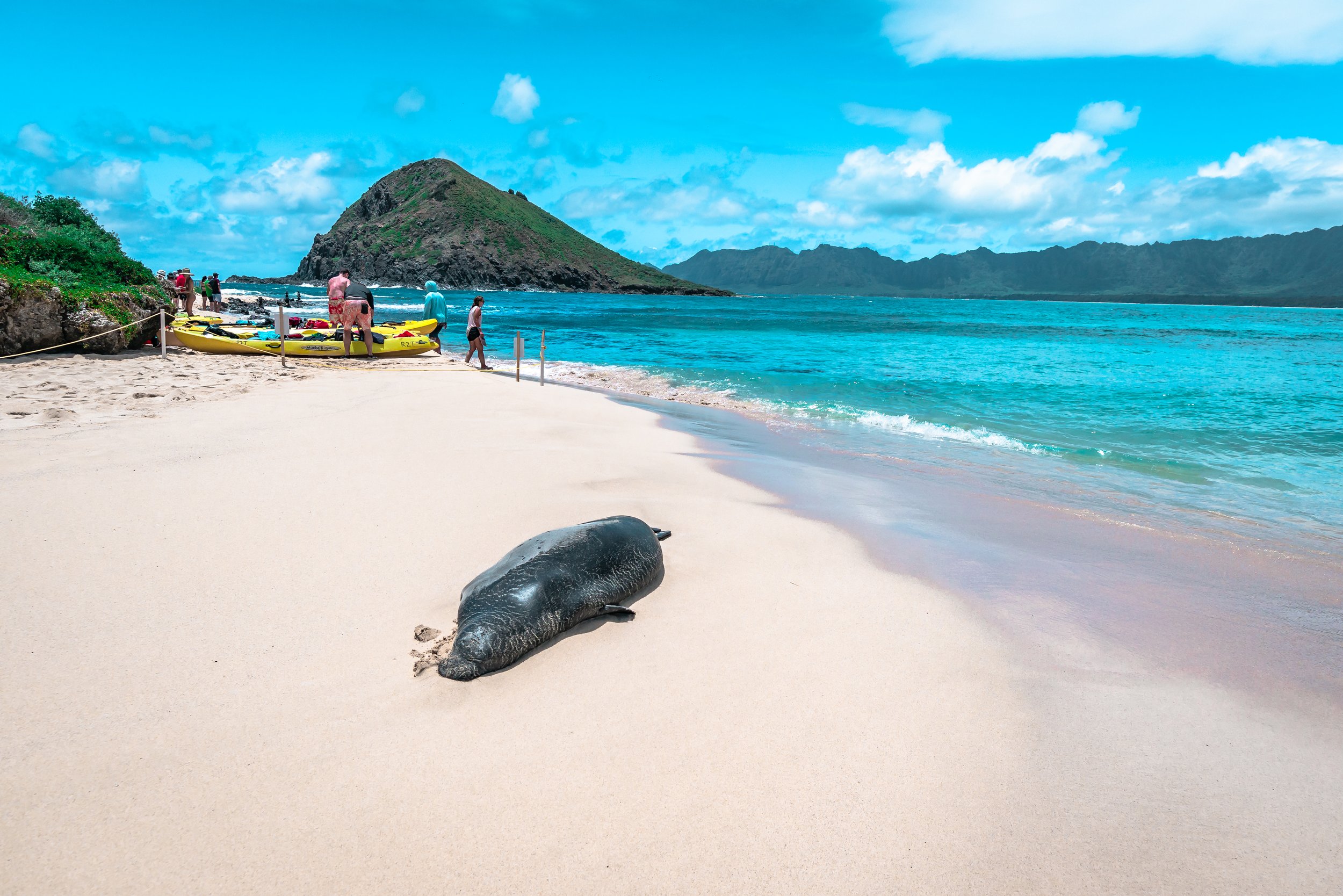
a Complete Guide to Kayaking To The Mokes
Mokulua ISLANDS - Oahu Hawaii
Kayaking to the Mokes
Nestled far away from the hustle and bustle of Waikiki, over the jaw-dropping cliffs of the Koolau mountains, and past the beryl glittering waters of Lanikai perch the Twin Islands. Your breathtaking adventures awaits..
There’s no doubt that the Mokes (rhymes with strokes) are quintessential Kailua and a must for anybody visiting Oahu to see. While many are content to merely gaze at the stately islands as they enjoy some of the best beaches in the world, few people know of the purely satisfying experience of visiting these little island gems. Sound interesting? This guide covers everything that you might need to know (or want to know) about kayaking out to these idyllic sanctuaries.
Should I book a guided Tour to the Mokes?
The short answer, YES! While you might be able to kayak to the Mokes on your own, there are a lot of factors that will need to go right. The route is very specific. The route and landing area changes based on the day’s conditions. Our guides are experts, having gone through rigorous training and can make the difficult become easy. Ok, but almost as important as safety, its more fun! There is little chance you will find hidden tide pools, see as many sea turtles or know the best spots to snorkel without a guide. You will also learn about the cultural significance of the islands, which is important when visiting Hawaii. Lastly, you will have the ease of knowing everything is taken care of. Snorkel gear on hand, lunch is packed, permits are secured, lets go!
Nā Mokulua are a pair of volcanic islets formed by a massive landslide of the Ko’olau volcano sliding into the ocean millions of years ago. Residing about .75 miles away from Lanipo in Lanikai (Kaohao) on the windward side of Oahu. Kailua and Lanikai are located about a 30 minute drive from most of Honolulu and Waikiki.
“Moku” in Hawaiian means island. “Lua” means two. You can only visit the larger island on the left side looking from the beach. This island is called Moku Nui (meaning larger island) whereas the smaller island on the right side is called Moku Iki (meaning smaller island). Moku Iki is always off-limits to the public. All of the islets off of the eastside of Oahu are State Seabird Sanctuaries and are regulated by the Department of Land & Natural Resources (DLNR). Nearly all these islets are completely off-limits for visiting. The fact that they allow any visitation to Moku Nui means that it is a privilege and that all visitors should treat the islands, the rules, and their inhabitants with the utmost respect.
What are the Mokulua islands?
Should I call them the Mokes?
The Mokes are more respectfully referred to as Nā Mokulua. We only refer to them as “The Mokes” in order to reference this commonly used name.
Ways to kayak to the Mokes?
No doubt, the best way to get to the Mokulua Islands is to paddle. The first thing to decide is whether you want to go on your own with a rental kayak or to hire an experienced waterman to take you out.
So yes, you should know how to swim (at least with a lifejacket) if you are going to paddle out there. It can be dangerous to paddle out there without proper knowledge of Kailua Bay. Knowing the current conditions is a must. Feel free to call our shop at 808-262-2555 to see if it's an advisable day to go out there.
It is the ocean… so it poses a lot of difficulties that lakes and rivers do not. We also are located on the windward side of the island so we have predominant trade winds that blow onshore and can be worrisome for many novice paddlers. Know your own athletic ability, past water experience, and make an informed choice on whether to brave it on your own or not. Only you know your limits. If in doubt, we always suggest going with a guide. No matter what, definitely bring a healthy sense of adventure.
Our shop offers self-guided and guided tours to the Mokulua Islands.
Do I need permits to visit the mOKE islands?
Yes, the Department of Land and Nature Resources requires the purchase of landing permits which are included in our Self Guided Kayak Tour and Twin Island Guided Kayak Tour.
Keep in mind that there are no landing permits issued on Sundays so make sure to plan your kayaking adventure Monday-Saturday.
Should we take single kayaks or double kayaks to the Mokulua Islands?
We do this everyday. Trust us, going in double kayaks is easier to get to the islands.
Even with past kayaking experience, we recommend taking a two-person kayak if you plan on going with anyone. Double kayaks are typically easier to maneuver in the currents and the extra help from a friend usually makes double kayaks have a shorter paddling time. Plus, if somebody wants to snap a couple of photos during the paddle, being in a double makes this much much easier.
Should I launch from Kailua Beach Park or Lanikai Beach?
The two closest beaches to the Mokulua Islands are Kailua and Lanikai or Kaʻōhao. Lanikai is a shorter paddle (about .75 miles) to the Mokulua Islands, but is completely a residential neighborhood with no facilities or businesses and extremely limited parking. Therefore, unless you have a rental car or a buddy on island, this may not be an option for your island adventure. On an average day, launching from Lanikai beach will take about 30 to 45 minutes of paddling to reach the islands.
Kailua Beach is slightly longer (about 2.5 miles), but offers the opportunity to take breaks at Popoia Island (Flat Island) along with Lanikai beach itself where there’s epic snorkeling. Additionally, the beach park has many parking lots, facilities to rinse off afterwards, along with businesses and food places that are all walkable to the beach (like our shop!). On a day of typical conditions, launching from Kailua Beach will take about 1 hour 15 minutes to 1 hour 30 minutes of paddling to reach the Mokulua Islands.
One of the biggest pluses of renting from us and launching from Kailua Beach Park is that we are able to provide the kayaks on a cart so you can stay parked at our shop and walk with the kayak to the beach (about a 10 minute walk).
The paddle
You gotta enjoy the ride. All too often we hear people who say it felt like they weren’t making much progress as they were kayaking out because the islands seemed to stay about the same size for about 80% of the paddle.
We know that the paddle can be quite exhausting, but don’t forget to stop and look for honu (Hawaiian Green Sea Turtles) surfacing to breathe all around you. Or, keep your eyes peeled for some of the most exotic seabirds in the sky. Some people even report seeing Hawaiian Monk seals on their paddle out!
Launching
For launching and landing, we recommend pulling your kayak into about waist-deep water and then hopping in the kayak butt-first with your feet being the last thing that goes into the kayak. As soon as you hop in the kayak, it's important to remember to start paddling immediately and not to stop until the waves die down a bit (typically out by the swim buoys).
The Route
All too often we hear about people who aim straight for the islands and end up having trouble in the waves on the shallow reefs. We recommend a path that sticks fairly close to Lanikai Beach to avoid the especially reefy areas that serve as a barrier to the bay. A lot of people get tempted to cut the corners, but you risk going over some of the most exposed reefs with the largest waves if you cut out too early.
Route from Kailua Beach
After launching from Kailua Beach, head out towards the rightmost side of Flat Island. Then, when you can see Lanikai beach to your right and are close to Flat Island, turn your kayaks south towards Lanikai Beach to get around the rocky Alala Point (the hill at the front of Lanikai). From here, paddle parallel to the seawalls and the beach. The sandy part of Lanikai beach will end and continue past this until you are parallel to the last beach access in Lanikai. Generally, we look for a white house with a red roof. From there, head straight for the beach on Moku Nui. You may notice that the waves typically increase as you get closer to the islands.
Route from Lanikai Beach
Launching from the beach itself in Lanikai you follow the same route as from Kailua Beach except you’re starting halfway through. Launching from the beach, point your kayaks out towards the Mokulua Islands and paddle a few hundred feet. Then, turn your kayaks southeast to run parallel to the beach and seawalls. Then, continue on to that last beach access (white house with a red roof). Then, point the kayaks directly at the beach on Moku Nui.
Keep in mind that there are a lot of beach accesses in Lanikai and you can choose to start from the last beach access called “Lanipo” near Wailea Point. This can greatly reduce the amount of paddling you have to do to about ¾ mile. Additionally, if you start from the last beach access, you simply point your kayaks at the beach on Moku Nui and you paddle there. No complicated route needed.
Landing on the Mokes
It’s important to note that the Mokulua Islands are on the edge of the island’s shelf. What this means is that on the back side of the Mokes, the depth of the water drops rapidly. Thus, the big ocean swells hit the back side and then wrap around either side of the island together right at the beach (which is how the beach forms!).
Now, we always recommend that when you get close to the island take a short break and watch the waves and the beach. How do the waves look? Is one side larger than the other? Are there any breaks between the waves? Is there a Hawaiian monk seal on the beach I have to make sure I don’t get close to?
Generally, you’re looking to see if the waves may be stronger on one side over the other. Depending on what season you paddle out to the islands, it's possible the entire beach may move hundreds of feet around the island depending on the swells that are hitting the island at that time of year. In the summertime, Oahu typically gets mostly south swells meaning that the waves on the right side will be bigger. In the wintertime, Oahu typically gets more north swells meaning that the waves on the left side of the island can be larger.
Tip: Always try to stay pointed directly into the waves.
The waves and the beach change everyday and sometimes every hour. So, there’s not a holdfast rule of thumb for landing. Once assessing the waves and looking for a monk seal, angle your kayak so you’re at least somewhat pointed into whatever side of the island has the larger waves. When you get into waist-deep water, both people on the kayak hop out immediately at the same time, on the same side. It’s important to remember that the waves are not going to be stopping for you. So, make haste. Try to choose the side with the larger waves to hop out.
Best Things to Do On The Mokes
The Mokulua Islands offer some of the most pristine waters and wildlife across the Hawaiian Islands. Since they are protected State Seabird Sanctuaries, feel lucky to count yourself as one of the lucky few who gets to revel in the island’s raw beauty. This does mean though that these islands do not have much, if any shade, restrooms, or facilities to fill water bottles. Please employ leavenotrace practices. These Islands are for the wild so please keep them this way and pack out any and everything that you bring out there. Here’s a list of the best things to keep you busy on this untamed island.
Take a walk to the Queen’s Bath
On extra calm days it’s possible to visit this tide pool. A short walk (about 5 minutes) around the right side of the island will bring you to the Queen’s Bath. The Queen’s Bath is a lava pool formed from the ocean waves splashing against the rocks and getting trapped in it. Then, the hot Hawaiian sun evaporates off some of the water so what you have left is a very very salty saltwater bath. Make sure to wear your shoes to go back here because you will be climbing over some tough lava rock. Always check with staff about conditions before attempting to reach Queen’s Bath.
Snorkel
The rare placement of this island at the edge of the reef and before the big blue can make it some of the best snorkeling on the island. Lots of Hawaiian Green Sea Turtles (Honu) can be found along with a rainbow of colorful reef fish. Keep your eyes on the lookout for stunning eels and crabs too.
Enjoy the out of this world view of the Koolau Mountains
It’s hard work getting out there. Sometimes the best way to enjoy the island is by just putting out a towel and taking a rest at one of the most scenic spots in Hawaii. The Koolau mountains are the mountains that start at the southern tip of Oahu cradle the entire east side of the island. “Koolau” translates as windward in Hawaiian. Way back when, the Koolaus used to be a shield volcano that went way past the Mokulua Islands into the ocean. Over time, erosion slowly eroded them away into what they are today. The wind and weather of the trade winds are what give those mountains the characteristic sharp cliffs that are so iconic of the east side of Oahu.
Admire the wildlife (from afar!)
There’s numerous different creatures that call this island home. Wedge-tailed shearwaters hide with their fluffy little ones in the holes on the interior of the island. Endangered Hawaiian Monk Seals bask in the sand from an early morning of eating fishees. Octopus (Tako) hunt in the rocky tidepools. Sea turtles poke their heads up in front of the beach as they chow down some algae. This island is where it's at.
Hawaiian Monk Seals (‘Ilioholoikeuaua)
Hawaiian monk seals get their name because unlike most seal populations who live in large colonies, these seals live mostly solitary lifestyles like monks. The seal’s Hawaiian name actually means “dog that runs in rough water.” You might see their resemblance to our canine friends especially when the monk seals are young pups. Unfortunately, as of 2021, the entire monk seal population is at 1,620 monk seals with only 400 in the eight main Hawaiian islands and only 80 on Oahu.
If you see the monk seal on the Mokes, please make sure to give the monk seal at least 50ft and 150ft if a monk seal is with a baby. Barriers should be, but may not always be up. You should especially be careful while landing on the islands since often the seals blend in since they are sleeping.
Wedge-Tailed Shearwaters (‘U’au Kani)
Wedge-tailed shearwaters are migratory seabirds that spend the bulk of their lives out on the open ocean and only return to the islands to nest. They get their name because of the wedge shape that forms on the adult’s tails. The bird’s Hawaiian name means “moaning petrel.” Though technically not a petrel, they do look similar and they definitely create a moaning sound at night time. My favorite name for the birds though is their scientific name of “puffinus pacificus.”
The birds nest with the same mate and the same nest for life unless there is a problem with breeding new birds. Since the birds spend most of their lives out at sea, they have extremely webbed feet so they look very awkward hobbling around on land. Naturally, the birds feed pelagically on mostly fish. On average, they’ve found the birds diving about 46ft, but have recorded the birds diving as much as 217ft before. The birds also have desalination glands which allow them to drink salt water and process this into fresh water.
Typically, the birds begin arriving on the Mokulua Islands in April and then most of the birds, including the babies, will leave by the end of November.
Hawaiian Green Sea Turtles (Honu)
The Hawaiian Green Sea Turtle is a threatened species of sea turtles indigenous to Hawaii. Luckily, their numbers are steadily increasing. These little cuties regularly make their rounds around Kailua bay feeding on all the flourishing algae the bay has to offer. In fact, the “green” part of their name actually refers to the color of their fat tissue from eating so much algae as opposed to the color of their shells or skin coloring.
Because of the threatened nature of the species, it's important to not get too close, interact, harass, or in any way disturb the turtles. The minimum distance to keep between you and the sea turtle is 10ft. As you paddle, you may see the turtles regularly pop their heads up to breathe while they’re eating
Great Frigatebirds (‘Iwa)
‘Iwa birds are iconic in the Hawaiian islands with their long winds and split tail. They literally have the largest wings for their body weight of any bird in the world. Since tracking them, scientists have found that the birds can fly for over two months straight without landing. It’s no wonder that the bird is a symbol of Polynesian ocean navigation.
‘Iwa in Hawaiian, means “thief.” This refers to the ability for the birds to attack other birds and steal their food. In fact, even their english name “frigate” refers to the type of vessels used by looting pirates for the same reason. Keep your eyes peeled for these birds soaring high in the sky looking for their next target.
